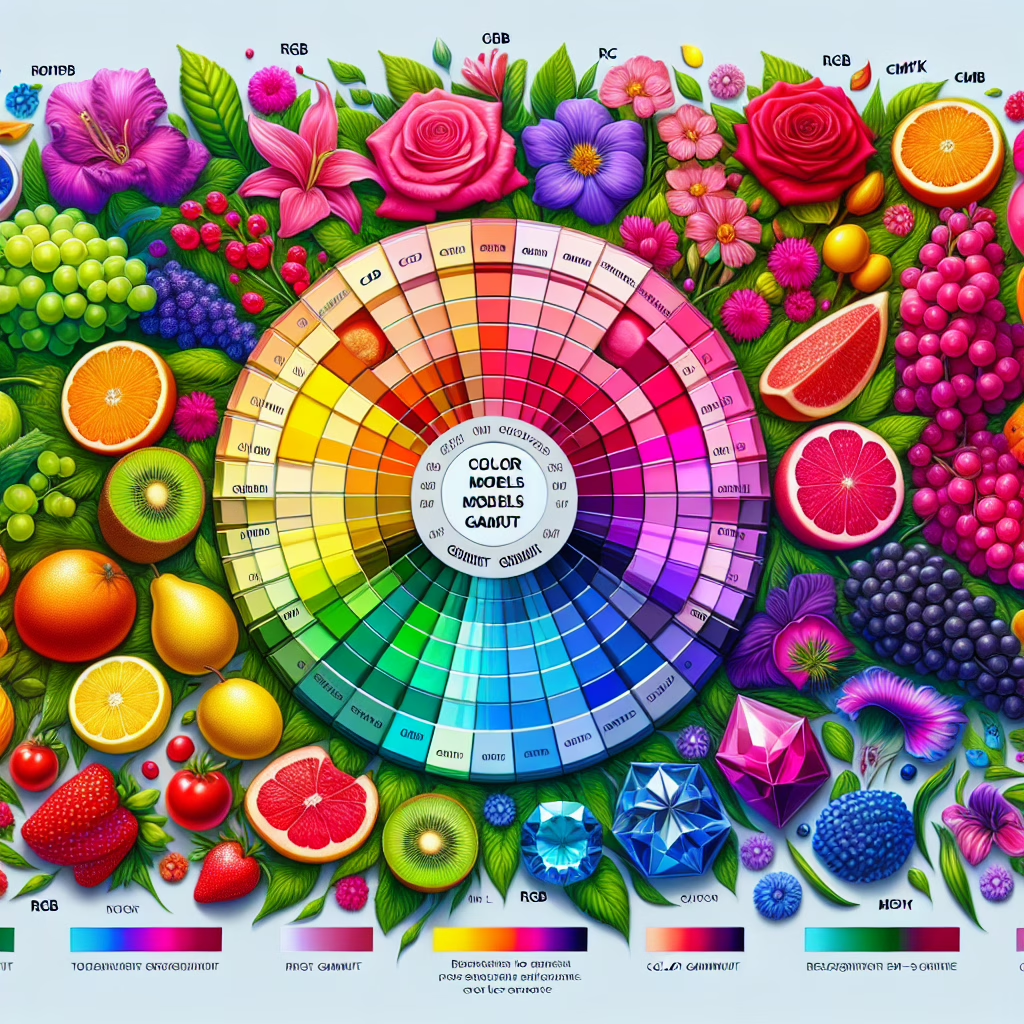Welcome to the vibrant universe of color models and gamut, where mathematics and artistry collide in a delightful dance! If you’ve ever wondered why your brilliant sunset photos look more like a muddy puddle on your screen, you’re not alone. Understanding color models and gamut can feel like navigating through a mathematical nightmare, but fear not! We’ll take you on a whimsical journey through this technicolor maze.
The Basics of Color Models
At its core, a color model is like a recipe for mixing colors. Imagine you’re in a kitchen where the ingredients are light and pigment rather than flour and sugar. The most popular color models include RGB (Red, Green, Blue) and CMYK (Cyan, Magenta, Yellow, Black). Each serves a different purpose, much like how a chef might choose between a whisk or a spatula depending on the dish.
The RGB model is the go-to for digital screens. Think of it as creating a rainbow by mixing red, green, and blue light. When combined at full strength, these colors create white light – perfect for those late-night Netflix binges when you need all the brightness you can get!
Diving Deeper into Gamut: The Color Playground
Now, let’s talk about gamut, which sounds like something straight out of a sci-fi movie but is actually quite simple. Gamut refers to the range of colors that can be represented in a given color model. Imagine you’re at an amusement park; some rides only allow certain heights – that’s your gamut! If your favorite shade of teal isn’t on the ride’s approved list, well, tough luck!
Different devices have different gamuts. For instance, professional printers often have a wider gamut compared to standard home printers. This means they can reproduce more vibrant colors – think of them as the overachievers in the world of printing. Understanding your device’s gamut can drastically improve the quality of your prints!
The Color Conundrum: Why It Matters
You may ask yourself, “Why should I care about color models and gamut?” Well, dear reader, if you’re into photography, graphic design, or just want your Instagram feed to look fabulous (who doesn’t?), understanding these concepts is crucial. It’s the difference between posting a dazzling image that pops and one that looks like it was filtered through yesterday’s laundry!
A color model helps ensure that your colors are consistent across various platforms – from your computer screen to your smartphone to that fancy printer at your local copy shop. But beware! Just because you see a vibrant color on your screen doesn’t mean it will look just as fabulous printed out. The limitations of gamut can lead to disappointment quicker than you can say “RGB.”
The Fascinating World of Color Spaces
Now that we’ve dabbled in models and gamuts, let’s introduce another player in our colorful saga: color spaces. These are subsets of color models that define specific ranges of colors. Think of them as exclusive clubs where only certain shades are allowed entry.
One well-known color space is sRGB (standard RGB), which is widely used for web images. However, if you’re feeling adventurous (and let’s face it, who wouldn’t want to be more adventurous with their colors?), you might explore Adobe RGB or ProPhoto RGB for more vivid options. Just remember that with great power comes great responsibility – choose wisely!
The Impact of Gamut on Your Creative Projects
When embarking on creative projects, understanding how color models and gamut interact will elevate your work from “meh” to “wow!” This knowledge allows designers to make informed choices about which colors will translate well across various mediums. So whether you’re designing marketing materials or printing family photos, keep your gamut in check!
- RGB is ideal for digital imagery.
- CMYK excels in print.
- Explore color spaces for enhanced creativity.
In conclusion, while the world of color models and gamut may seem daunting at first glance (cue dramatic music), it holds the key to unlocking stunning visuals in your projects. Embrace the quirks of mathematics as they lead you to greater creativity!
Join the Conversation!
Now it’s your turn! What are your thoughts on color models and gamut? Have any colorful experiences to share? Drop your ideas in the comments below!
A big thank you to The Verge for their enlightening article on this topic! We appreciate their insights as we navigate this colorful landscape.

